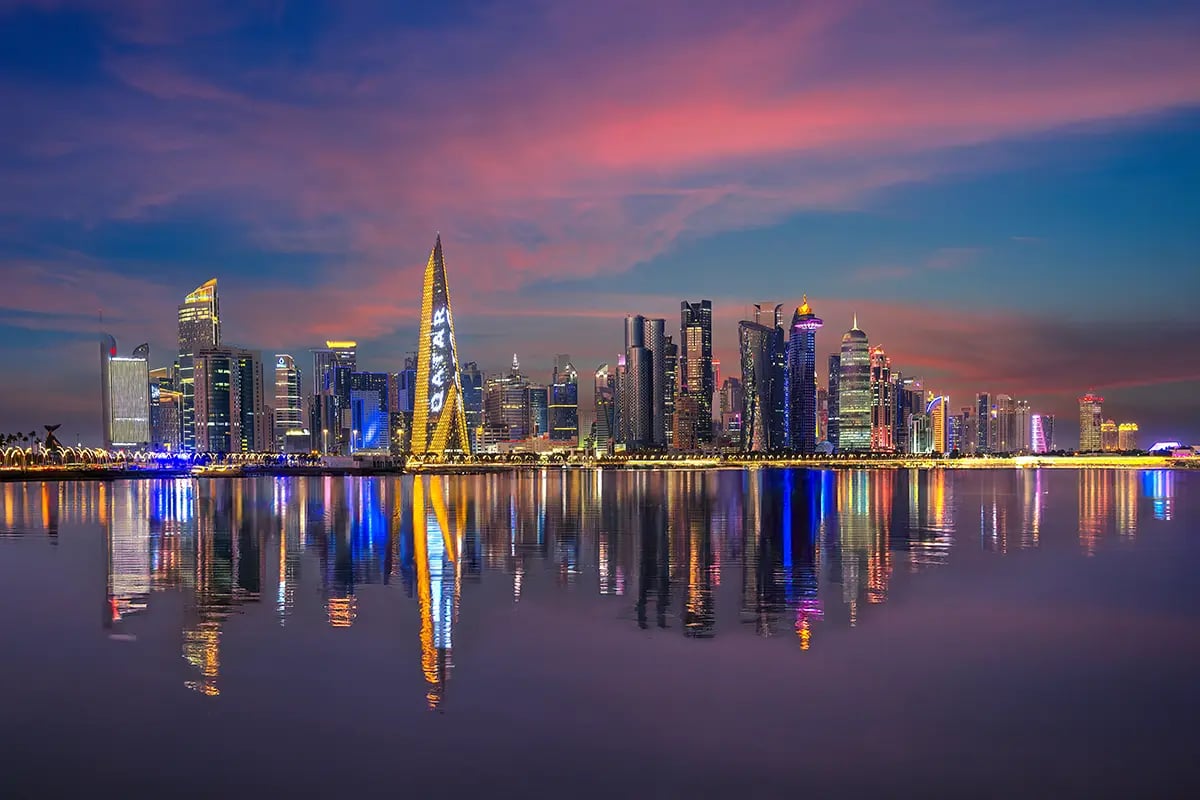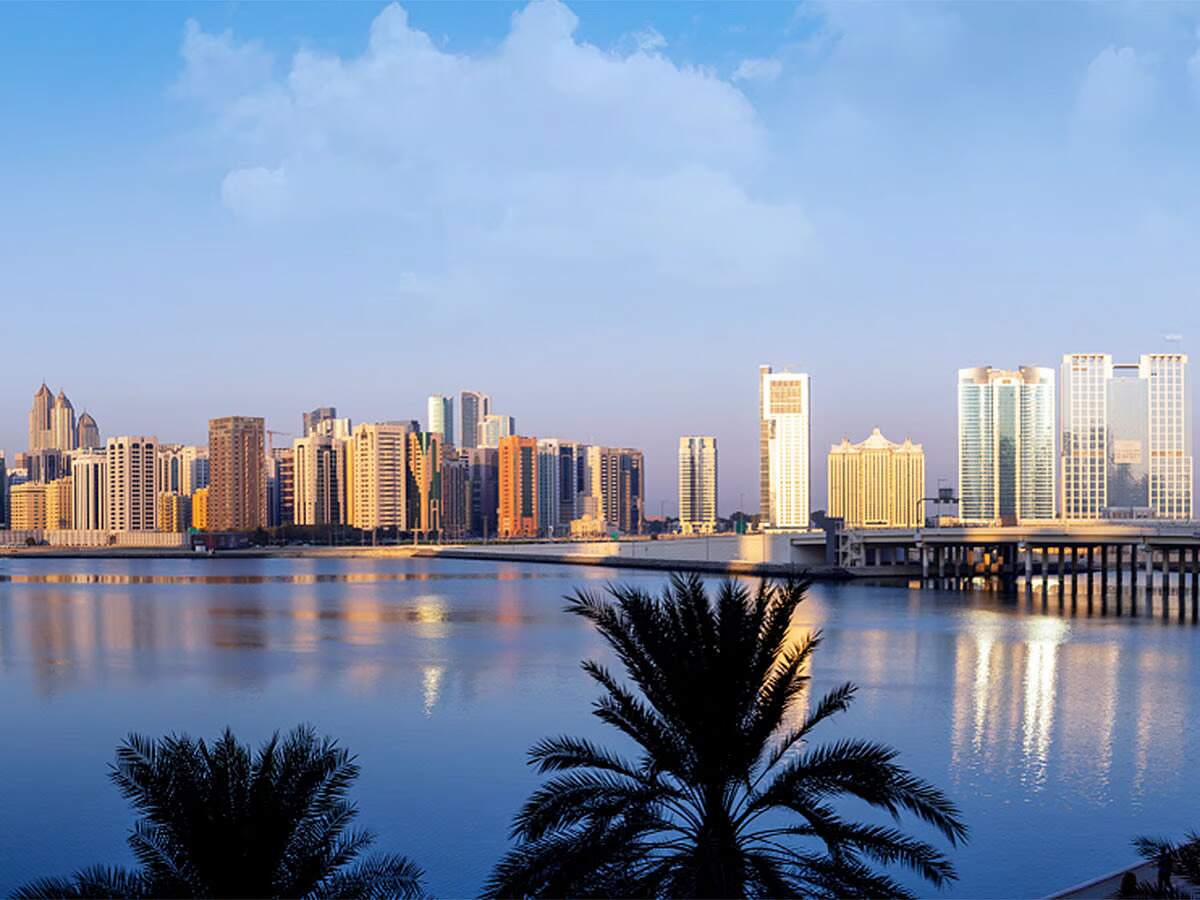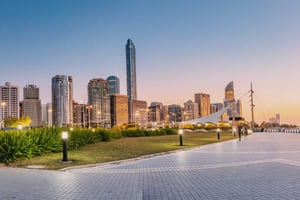In 2025, Abu Dhabi was ranked first on the world’s safest cities list for the 9th consecutive year, reflecting the emirate’s efforts to develop pioneering security plans, strategies and initiatives.
According to the online database Numbeo, Abu Dhabi ranked first out of 263 global cities in 2025. This is attributed to the city’s ongoing efforts to enhance quality of life for citizens, residents and visitors. The Abu Dhabi Police promotes a sense of safety and security in the city while strengthening the trust of community members, reinforcing Abu Dhabi’s position as a preferred place to study, work and live.
Numbeo derives its data from surveys that are structured similarly to established scientific and governmental surveys. To maintain data accuracy, it employs spam filtering algorithms that exclude inputs from users exhibiting suspicious behavior. Survey results are then scaled from 0 to 100 for easier interpretation and comparison. The index is updated continuously and is compiled from data within the past 5 years.
To come up with the safest cities in the world ranking, Numbeo inverts the results of its Crime Index, which accounts for general perception of crime levels, perceived safety during daylight and nighttime, concerns about specific crimes, property crime severity, and violent crime severity.
Notably, the UAE ranked as the second safest country in the world this year. The UAE also ranked as the country with the second-lowest rate of crime globally, further solidifying its status as one of the safest countries in the world.
Top 10 safest cities in the world
1. Abu Dhabi — UAE
With a safety index of 88.4, Abu Dhabi emerges as the safest city in the world, holding its top position for 9 consecutive years.
The Abu Dhabi Police play a crucial role in maintaining the city’s safety. Their efforts include community policing, advanced technology, and regular training programs for officers.
Police in the city seek to build strong relationships with residents to foster trust and cooperation. The Abu Dhabi Police also utilize the latest technology to monitor and respond to incidents and crime swiftly.

2. Doha — Qatar
Doha achieved a score of 84.1 on the safety index, making it the second safest city in the world. The city is considered the second safest city in the world due to its low crime rates and strict law enforcement. The country maintains political stability and has a high standard of living, which contributes to public safety and social order. Additionally, the presence of a large police force and advanced security infrastructure ensures quick response to any threats.
3. Dubai — UAE
Abu Dhabi’s next-door neighbor, Dubai, was ranked the third safest city in the world, with a score of 83.8. Dubai has some stringent laws regarding the security of its residents. The Dubai Police Department is also known for its efficiency and integrity. It ranks among the most transparent and dedicated police departments in the world.
Notably, the Dubai Police became the first in the region to use DNA testing and electronic fingerprints during crime investigations and move towards a paperless system.
4. Taipei — Taiwan
In 4th place comes Taipei with a score of 83.8, the first East Asian city on the list. The crime rate in Taipei is very low, with the majority of visitors feeling safe to walk alone both in the day and at night.

5. Sharjah — UAE
Fifth on the list is Sharjah, also with a score of 83.8, the third UAE city on the list of the safest cities in the world. Sharjah is considered safe due to its low crime rates, strong legal system, and effective policing. The emirate emphasizes community safety through strict regulations. Like other UAE cities, it benefits from political stability and advanced surveillance infrastructure that help maintain public order.
6. Manama — Bahrain
The sixth safest city in the world this year is Manama, scoring 81 on the Numbeo safety index. The capital of Bahrain is considered one of the safest cities in the world for both residents and tourists. It has a low crime rate, especially for violent crimes, and the government maintains a stable security presence. Good street lighting and the widespread use of security cameras in the city further bolsters its overall safety.
7. Muscat — Oman
With a score of 80.9, Muscat closely follows Manama, ranking as the seventh safest city in the world. Oman remains one of the safest countries in the Middle East, characterized by its wealth, strict legal system and the hospitality of its people. Violent crime and petty crime rates are low.
Muscat excels in areas such as low rates of theft, assault and vandalism, along with high levels of confidence in public safety. Its commitment to sustainable urban planning and community well-being further enhances its reputation as a top-tier city for safety and quality of life.

8. The Hague — Netherlands
Scoring 79.5, The Hague ranked as the 8th safest city in the world this year. Known as the city of peace and justice, The Hague boasts high safety standards. It is home to many international organizations and offers a secure and stable environment.
9. Munich — Germany
With a score of 79.4, Munich emerged this year as the 9th safest city in the world. Munich regularly ranks among the best for low crime rates and traveler security, according to Numbeo. Compared to other German cities, Munich has one of the lowest crime rates, which makes it a standout destination for solo female travelers or anyone looking for a stress-free vacation.
10. Trondheim — Norway
In 10th place comes Trondheim, with a safety score of 79.3. The crime rate in the city is extremely low and it is well-lit and well-populated, even late at night. Trondheim boasts a well-maintained public transportation system, which makes getting around the city easy. The buses and trams run frequently and are easy to navigate, ensuring you can get to your destinations safely.
The locals in Trondheim are also known for being hospitable and helpful, making visitors feel more comfortable.

What makes a city the safest?
Several factors contribute to a city being one of the safest globally, including:
Low crime rates
One of the most significant indicators of a safe city is its crime rate, particularly incidents involving violent crime, theft and assault. Cities with consistently low crime statistics tend to foster a greater sense of security among residents and visitors. This safety often reflects effective policing, robust legal systems and community-based crime prevention programs.
Moreover, when people feel safe in public spaces, they are more likely to engage in social and economic activities that further strengthen the community. Trust in law enforcement and governance is also generally higher in such cities, reinforcing a cycle of safety and civic engagement.
Political and social stability
Safety is also deeply tied to the broader political and social environment. Cities in countries with stable governments and minimal civil unrest typically rank higher in safety indices. Political stability ensures the consistent delivery of essential services and the enforcement of laws while also preventing the disruptions that come with conflict or governance failure.
Social factors such as strong education systems, economic opportunities, and a sense of inclusion also foster community cohesion and reduce the likelihood of crime and violence. When people feel like they are treated fairly, they are more likely to contribute to and maintain a peaceful urban environment.
Economic stability
Economic stability is another key characteristic of the safest cities in the world. Such cities have strong economies that provide for the basic needs of their citizens, including access to healthcare, education and employment opportunities.
The safest cities also have low levels of poverty and income inequality, which reduces the likelihood of crime and social unrest. Moreover, they have implemented policies to promote economic growth and development, such as investing in infrastructure, education and innovation.
For example, countries like the UAE and Qatar have implemented policies to promote economic growth and development, such as investing in infrastructure, education and innovation. They have also established a highly efficient and effective public sector, which provides high-quality public services to citizens.
Quality of public services
Public services play a foundational role in urban safety. Immediate access to emergency healthcare, a responsive and well-equipped police force, and reliable infrastructure are critical for managing risks and ensuring public well-being.
Clean streets and well-maintained public spaces not only reduce hazards but also deter petty crime and anti-social behavior. Furthermore, efficient transportation systems and smart urban planning contribute to the orderly movement of people, minimizing accidents and enhancing daily life.
Cultural attitudes towards safety
Cultural attitudes towards safety also play a crucial role in determining the safety of a city. The safest global hubs have a culture that values safety and security, where citizens play an active role in maintaining public order.
For instance, countries like Japan have a strong culture of respect for authority and a strong sense of community, which contributes to their low crime rates. Citizens in Japanese cities are also highly aware of their surroundings and take steps to prevent crime, such as reporting suspicious activity to the authorities.
In contrast, cities with high crime rates often have cultural attitudes that tolerate or even glorify violence and lawlessness. They may also have weak institutions and a lack of trust in the authorities, which can contribute to a culture of impunity.
National security policies
The safest cities in the world have robust national security policies in place, which include effective law enforcement, efficient public services and robust healthcare systems. These policies are designed to protect citizens and visitors and to maintain a secure environment.
One of the key characteristics of the safest cities is their ability to balance individual freedoms with collective security. They have implemented policies that prioritize public safety while also respecting human rights and civil liberties.
For example, cities like Abu Dhabi have implemented strict laws and regulations to prevent crime and maintain public order. At the same time, they have established institutions to ensure that these laws are enforced fairly and transparently.
Overall, the safest cities in the world have a combination of effective national security policies, economic stability and cultural attitudes towards safety that contribute to their low crime rates and high levels of public safety.

Trends shaping urban safety in 2025
This year’s standout trends clearly point to the increasing integration of artificial intelligence in core functions such as traffic management, urban planning, and citizen engagement in major cities around the world. Cities are working towards offering digital, clean, intelligent, autonomous and intermodal mobility, with more walking and cycling spaces, where transport is commonly provided as a service.
The safest cities in the world are also developing healthcare ecosystems that are focused not only on diagnosing and treating sickness but also on supporting well-being through early intervention and prevention while leveraging digital technologies.
Major hubs like Abu Dhabi, Doha and Dubai are also leveraging artificial intelligence to ensure safety and security for their citizens while safeguarding privacy and fundamental human rights. An emerging focus in recent years has also been cybersecurity. Cities are striving to promote awareness of the importance of data privacy and preparedness for the impact of cyberattacks since data will be an important city commodity.
Moreover, climate resilience is emerging as a top safety priority in most major hubs around the world. Heat waves, flooding and extreme weather events have prompted cities to enhance infrastructure resilience and emergency response systems. Urban planning now includes climate-adaptation strategies such as green roofs, permeable pavements and early-warning systems.
Read: 15 safest countries in the world to live and visit in 2025
Frequently Asked Questions (FAQs)
What is the safest city in the world in 2025?
With a safety index of 88.4, Abu Dhabi is the safest city in the world this year, holding its top position for 9 consecutive years.
Why is Abu Dhabi ranked as one of the safest cities globally?
Abu Dhabi attributes its ranking to ongoing efforts to enhance the quality of life for citizens, residents and visitors. The Abu Dhabi Police promotes a sense of safety and security in the city while strengthening the trust of community members, reinforcing Abu Dhabi’s position as a preferred place to study, work and live.
How is city safety measured in international rankings?
City safety in international rankings is typically measured using indicators such as crime rates, law enforcement effectiveness, personal safety, digital security, health security and infrastructure safety. These rankings often rely on data from government sources, surveys, and global indexes. Factors like emergency response times and prevalence of violent crimes also play a key role.
Is Dubai safer than other global cities?
Yes, Dubai was ranked the third safest city in the world in 2025, with a score of 83.8. It is considered one of the safest global cities, with low crime rates and a strong police presence. Compared to many major cities, Dubai offers a high level of personal and public safety.
What makes a city truly safe for residents and visitors?
A safe city is characterized by low crime rates, effective law enforcement, and a well-functioning justice system that ensures quick responses to incidents. It also has well-maintained infrastructure, including well-lit streets, reliable public transportation and access to emergency services. Additionally, social stability, community engagement and a focus on mental and physical health contribute to an overall sense of security for both residents and visitors.








